#Eisenhower Matrix for Task Prioritization
Explore tagged Tumblr posts
Text
5 Ways Successful Entrepreneurs Manage Time Well
By practicing effective time management, you can optimize your productivity, reduce stress, and maintain a healthy work-life balance.
Introduction As an entrepreneur, time is your most valuable resource, and managing it effectively is crucial for success. Proper time management lets you focus on critical tasks, increase productivity, and balance work and personal life. In this article, we will discuss five ways successful entrepreneurs manage their time, including prioritizing tasks, creating a structured schedule,…

View On WordPress
#becoming an entrepreneur#Eisenhower Matrix for Task Prioritization#how successful entrepreneur manage time#original content#success#time management#time management for entrepreneurs#time management practices#tips and tricks#wealth
0 notes
Text
Mastering Task Management: Strategies for Optimal Productivity
Mastering task management is essential for boosting productivity and achieving your goals effectively. By implementing strategic approaches such as prioritizing tasks, setting clear deadlines, and using task management tools, you can streamline your workflow and make the most of your time. Techniques like time blocking, the Eisenhower Matrix, and the Pomodoro method help you focus on high-priority tasks, avoid procrastination, and manage your workload efficiently. Additionally, breaking down complex tasks into smaller, manageable steps and regularly reviewing your progress can keep you on track. Whether you're juggling multiple projects or working independently, mastering task management is key to maximizing productivity and reducing stress.
More info: https://ahalts.com/products/hr-management
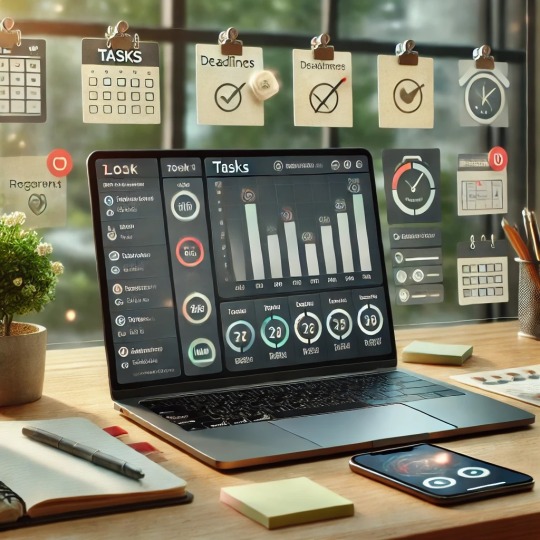
#task management strategies#productivity tips#time management#effective task management#prioritizing tasks#task management tools#deadline setting#workflow optimization#Eisenhower Matrix#Pomodoro method#time blocking
1 note
·
View note
Text
Quck list of soft productivity tips
Hello girlies, welcome to another blog! On this one I will write down quickly all the productivity tips that have helped me to have an consistent lifestyle in a soft and more femenine focused way.
We are femenine beings, our energy levels aren't like the ones of men, so we have to stop managing our life like them (same energy everyday, be quick, focus on achieving, etc..) and do it in a way that let's us do our tasks based on our necesities and letting our energy be free!
My tips
Plan your day according to your energy levels
Prioritize the hardest tasks + Use the Eisenhower matrix
Make a to-do list, focused on 3 mainly tasks
Reward yourself
Positive and clean environment
Get rid of distractions
Take breaks
2 minute rule - It takes less than 2 minutes? Do it
5 minute rule - Apply a timer and do that task for 5 minutes
Apply deadlines for yourself
Create systems to keep track
Already working on something? Try to do something else (for future ease and saving time)
Extras
Switch mindset: Discipline < Devotion
Good mood changes everything. Things will be easier and faster and you'll be more focused.
Good health transforms you. Without it, there's nothing
Focus on the positive to attract good things
Focus on what causes and impact in your life
Let yourself prioritize time to have fun and rest
Take things easy and slowly
Live in the present moment
Let's be succesful by grace! See you in my next blog 𑄽𑄺ྀ

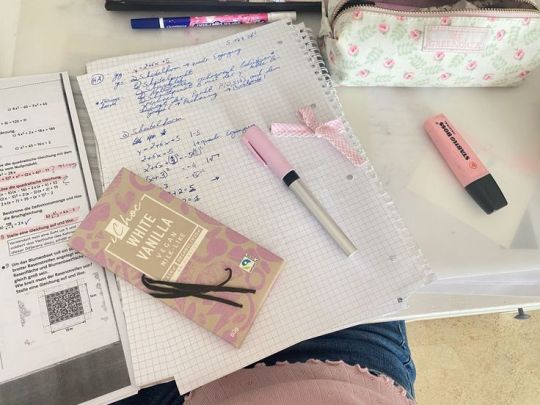

#dream girl#girljournal#hyper feminine#it girl#motivation#my diary#pink aesthetic#pink blog#that girl#clean girl#wonyoungism#thewizardliz#productivitytips#productivityboost#soft productivity#soft life#divine feminine#femininity#feminine aesthetic#just girly thoughts#just girly things#girly tumblr#just girly posts#girly blog#girly aesthetic#girly girl#light pink#pink#pinkcore#pink and white
2K notes
·
View notes
Text
planning basics⋆.ೃ࿔*:・📔

i feel like at this point im a planning MASTER i've been using notion to plan and organize my life for about two years now and before i discovered notion i used a manual planner. i've also made lots of content about planning but today i wanna just focus on the basics and how to organize ur life in a simpler fashion…💬🎀


SEPARATE UR TIME INTO QUADRANTS ;
so i like to separate my tasks into quadrants. im going to try and present it verbally. so the first quadrant would be urgent and important, things that are imperative for me to do. the second quadrant is important but not urgent.
the third quadrant is urgent but not important but its not necessarily imperative that i do them. and last but not least the fourth quadrant is what i classify as buffer time, mostly cuz its neither urgent nor important. and i'll go more in detail with that later on in the post. this is helpful because it helps u to place priority on the tasks that u have to do and not spend a day doing side quests while u have pressing matters that need attending to. this is called the eisenhower matrix.
THE DIFFERENCE BETWEEN CALENDAR AND AGENDA ;
so i keep a calendar and an agenda. the main differences between a calendar and an agenda is that the agenda is updated weekly, the calendar is updated monthly/whenever u make appointments.
i find myself looking at and checking my agenda more often then my calendar and thats mainly because im more in-depth on my agenda because im the kind of person who needs specific instructions to get something done. the calendar only tells u the date and the event but the agenda tells u more in depth about how to prepare and go about things.
DELEGATE AND OUTSOURCE TASKS ;
to delegate a task simply means to identify and give tasks that can be handled by others to free up ur time for more important work…💬🎀
GENERAL NOTION TIPS ;
use toggle lists
use THIS website for cute emoji combos (things like ❤︎ and ⋆.ೃ࿔*:・)
make a color scheme and stick with it
twitter headers work the same as notion backgrounds
GENERAL MANUAL AGENDA TIPS ;
color code tasks with adorable glitter gel pens. use post it notes to break down large tasks. like, write the broad task and on the underside of the post it note make a bullet list as u break down the task. mostly with manual agendas i just prioritize aesthetics because if it doesnt look good i won't wanna check it and perform it.
#honeytonedhottie⭐️#it girl#becoming that girl#self concept#self care#self love#that girl#it girl energy#dream girl tips#dream girl#dream life#self improvement#self discipline#self reflection#self development#personal growth#planning#organization#organization tips#princess#hyper femininity#hyper feminine#girly#girl blog#notion✍🏽🎀#notion tips
282 notes
·
View notes
Text
Mastering the Art of Time Management: Your Guide to Productive Study Sessions
Girls in Finance project server // other posts
Time management is a critical skill for academic success. By organizing your study sessions effectively, you can maximize productivity and achieve better results. Here's your comprehensive guide to mastering the art of time management:
1. Set Clear Goals:
Define specific, achievable objectives for each study session.
Break down larger tasks into smaller, manageable goals.
Prioritize tasks based on deadlines and importance.
2. Create a Study Schedule:
Develop a weekly study schedule that aligns with your routine.
Allocate dedicated time slots for different subjects or topics.
Include breaks to prevent burnout and maintain focus.
3. Utilize Time-Blocking Techniques:
Adopt the Pomodoro Technique or other time-blocking methods.
Work intensely for a set period (e.g., 25 minutes), then take a short break.
Repeat the cycle to enhance concentration and efficiency.
4. Eliminate Distractions:
Identify and minimize potential distractions in your study environment.
Consider using productivity tools or apps to block distracting websites.
Communicate your study time to friends and family to minimize interruptions.
5. Prioritize Tasks with Eisenhower's Matrix:
Categorize tasks into urgent, important, not urgent, and not important.
Focus on tasks in the "urgent and important" quadrant first.
Delegate or eliminate tasks in the "not urgent and not important" quadrant.
6. Review and Reflect:
Allocate time at the end of each study session to review what you've learned.
Reflect on your study methods and adjust your schedule accordingly.
Celebrate small victories and achievements.
7. Utilize Technology Wisely:
Explore time management apps and tools that align with your preferences.
Set reminders for deadlines and upcoming exams.
Leverage digital calendars to stay organized.
8. Stay Flexible and Adjust:
Be open to adjusting your study schedule based on your evolving needs.
Recognize when to take breaks or switch subjects to maintain engagement.
Embrace a growth mindset and learn from your experiences.
Join our Girls in Finance project if you want to learn more about studying finance and the financial world <3.
#studyblr#studygram#motivation to study#study notes#study tips#studying#100 days of productivity#studyinspo#study blog#exams#finance girl#findyourthing#finance
166 notes
·
View notes
Text
The Ultimate Guide to 2025 ˖ . ݁𝜗𝜚. ݁₊





✦ Create a Vision Board: Use Notion to design a digital vision board. Include sections for your goals, dreams, and affirmations. This visual representation will keep your aspirations at the forefront of your mind.
✦ Prioritize Your Goals: Break down your yearly goals into quarterly and monthly milestones. Use Notion to create a task tracker that allows you to see what needs to be done and when.
✦ The Eisenhower Matrix: Implement the Eisenhower Matrix to categorize your tasks based on urgency and importance. Focus on what truly matters—this will help you eliminate distractions and stay on track.
✦ Act As If: Live your life as if you have already achieved your goals. This doesn’t mean being delusional; it means adopting the mindset and habits of the person you want to become. This shift in perspective will attract the opportunities you need to make your dreams a reality.
✦ Embrace Change: Be open to new experiences and challenges. Growth often comes from stepping outside your comfort zone.
✦ Set Boundaries: Protect your time and energy. Learn to say no to things that don’t align with your goals or drain your spirit. Prioritize your well-being as you navigate through the year.


#affirmations#loassumption#loa tumblr#loa#law of assumption#loablr#loa blog#loassblog#law of attraction#manifesation#manifesting#motivation#tips#advice#bl0wupdo11#self concept#self care#subliminals#it girl#that girl#pinterest#4d reality#boost#how to 💋
22 notes
·
View notes
Text
How to use time efficiently with many interests and work commitments.
⋅•⋅⊰⋅⋅•⋅∙∘☽༓☾∘∙•⋅⋅⋅•⋅⋅⊰⋅•⋅⋅•⋅∘☽༓☾∘∙•⋅⋅⊰⋅•
Being productive, making the most of the 24 hours of our day and getting a high ROI back is your goal, but your daily schedule and the endless appointments that you have make you too tired to get work done, let you feel like you have no free time, no time to even study, and you have to spend countless all nighters to get your work done questioning yourself why you chose so many activities/ extracurricular's etc. in the first place and all the free time you have your essentially doomscrolying it away making you more unmotivated.
This is a guide on how you can use your time efficiently and get a huge ROI back without feeling exhausted/tired and finding enough time to study thoroughly, getting your work done without loosing your passion for other things and doing your hobbies.
So the first thing you have to do is to go to a regular week and observe when you have free time, when you are binge-watching shows, doomscroll or when you are so unmotivated that you don't want to do your work, study, do your homework etc. and also what tasks do you have when you go to work/school when you come back, clubs meetings etc. So everything you do regularly in the week
Lastly in this week you have to identify a Prime time where you are the most productive so you can plan your tasks around it.
A list can look like this:
Observation
Monday: Going home from work/school at 16:30 - one hour free time - until I have to go to extracurriculars/ course etc.
Tuesday
Wednesday
….
Prime time: Weekdays 10-12pm Weekend 9-12am
₊˚ ‿︵‿︵‿︵୨୧ · · ♡ · · ୨୧‿︵‿︵‿︵ ˚₊˚ ‿︵‿︵‿︵୨୧ · · ♡ · · ୨୧ ₊˚
So, after you got the times where you are doing nothing/ wasting your time you have to start listing all the tasks and events you have, then categorize them based on importance and urgency.
For this you can use the Eisenhower-matrix
where you organize your work and projects into four categories: Important and Urgent, Important but Not Urgent, Urgent but Not Important, Not Urgent and Not Important.
The Eisenhower matrix, also known as the Urgent-Important matrix, is a time management strategy that helps you prioritize tasks based on urgency and importance.
The matrix has 4 quadrants or sections:
Important and Urgent: These tasks need immediate attention.
Important but not urgent: These are high priority items.
Urgent but not important: These are things that are time-sensitive but can often be delegated.
Not urgent and not important: These are activities that can either be delayed or removed from the list entirely.
example:
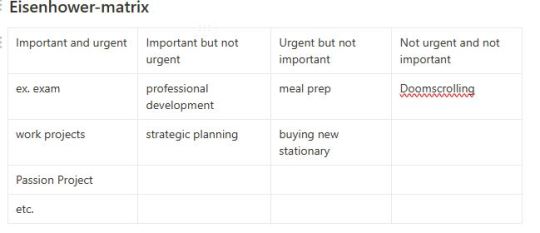
Planning your week in a strategic way
First you should Collect your observations in a 24 hours weekly planner like this and highlight the free time zones you have and also plan your regular sleeping time mine is from 10 to 5:30 am
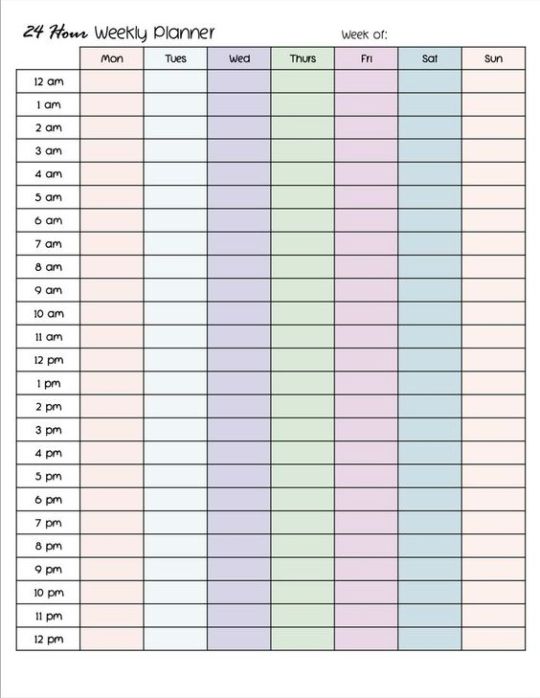
How to fill the free-spots:
Start by allocating time for high-priority tasks, then move on to lower priority ones, and finally use remaining time for recreation.
Place the high priority task in the (near the) prime time
If there are regular recurring tasks like homework hobbies etc. you should put it in a designated time slot
Try to avoid overworking yourself and prioritize your mental health.
Remember to take breaks in between tasks and give yourself a reward after completing something difficult or time consuming.
It's basically time blocking which is a method where you divide and schedule your day into focused intervals with no distractions
How to do the most in the weekend
After such a full week doing all your tasks you're obviously going to be tired and unmotivated to do anything. But the workload isn't going to get smaller but bigger in the next week, so you have to at least get something done. But do not force yourself to be 100% productive in the weekend because we all need some rest and constantly overworking yourself is unhealthy and also doesn't give you a good ROI in the long run.
Here are some methods that I've tried categorized in three levels: high; medium and low level depending on the mood you're in.
High level methods
The first method I suggest you to do is a method that is called Batch Tasking by Grouping
With this technique, you group similar tasks together and complete them in batches.
For example, you can have a morning batch of 'work-related tasks', an afternoon batch of 'personal tasks', and an evening batch of 'leisure tasks'.
This method can be useful for individuals who are motivated by completing multiple similar tasks at the same time, and it helps to avoid task switching and maintain a clear sense of purpose in your workflow.
The second method is the the "Marathon Mindset" technique
It's a method where you set a specific amount of time, say 3-4 hours, to focus intensely on completing your tasks. During this time, you can take short breaks (around 10 minutes) to prevent burnout, but the focus is on maintaining a steady work rate for the entire duration.
This technique can help you complete difficult tasks, and it's excellent for individuals who get into a 'flow' state when working on a project.
Medium level methods:
time boxing
This involves setting a timer for a specific amount of work, and once the timer goes off, you move onto the next task, no matter how much work was done. This helps create a sense of urgency and focus.
Time Boxing and Activity Swapping technique
Here, you set a short amount of time, say 15 minutes, for each task you want to complete. Once the timer goes off, you take a 5 minute break before moving onto the next activity.
But here's where it gets different: Each time you finish a task, you swap to a completely different activity than the last one. For example, after writing an email, you could do some calisthenics, then after that some cleaning, and so on.
This technique is great for individuals who struggle with task boredom
Low level methods
Focus on your "1 Thing"
it means working on the most important task each day, the "one thing" that'll move you closer to your goals. Once you've completed that 'One Thing' you can move onto the next.
This technique will help you to avoid multitasking and stay motivated, focusing your energies on completing the most crucial tasks first
Focus Sprint and Rest
Here, you work in intense 15-minute sprints, followed by a short 5 minute break. You repeat the routine 2-4 times before taking a longer break of around 15-30 minutes.
You can alternate between tasks or stay focused on one, depending on your preferences. This method is great for individuals who prefer shorter bursts of intense work, with short but regular breaks for a quick boost in energy.
Priority Power Hour
Using this technique, you dedicate a specific time of day, say 1 hour, to working on your most important and difficult tasks. Optimally this should be your power hour During this power hour, you commit to nothing else except completing these high-priority tasks.
The rest of your day can be spent doing less important tasks or working on other passions. The key benefit of this technique is that it allows you to stay focused and productive during your most efficient times of the day, while avoiding burnout.
Some last general tips
First, you should set achievable goals. This means breaking big tasks into small ones. This is very helpful if you have a big project that you have to do because the task load doesn't overwhelm you as much when you break aspects e.g. research as doing the whole project in a couple days and being very stressed.
Then you should limit distractions like your mobile etc. I would pack those things to another room so that they are not in front of your eye which makes you less likely to use them and get distracted. Also you should try to minimize multitasking because it diverts your attention on too many tasks and topics which makes your work imprecise and actually costs more time because you have to get into the thought process of topic 1 again.
Start with the end in mind. Define what you want to achieve during your sessions. Having clear goals helps you stay focused.
It's also important to schedule short breaks in the work session especially if you have many things to do to prevent burnout.
You should also have a monthly overview of important tasks separatly in a calendar
Regularly review your time management strategies and adjust them as needed. What's working? What needs improvement?
Lastly you should give yourself some rewards if you completed a difficult and important task to make you more motivate for more tasks
#wonyoungism#girlblogging#pink academia#becoming her#becoming that girl#girl blogger#pink pilates princess#productivity#time management#studyblr#productivitytips#productivityboost#productivity challenge#timemanagement#advice#that girl#dream girl essence#notion#time management strategies#dream girl#How to be NOT STRESSED out if you have a full plan#studyspo#literally me𓈒ㅤׂㅤ𐙚 ࣪ ⭒#Let's get productive Y'all#it girl energy#academic weapon#academic barbie#self improvement#self development#management
37 notes
·
View notes
Text

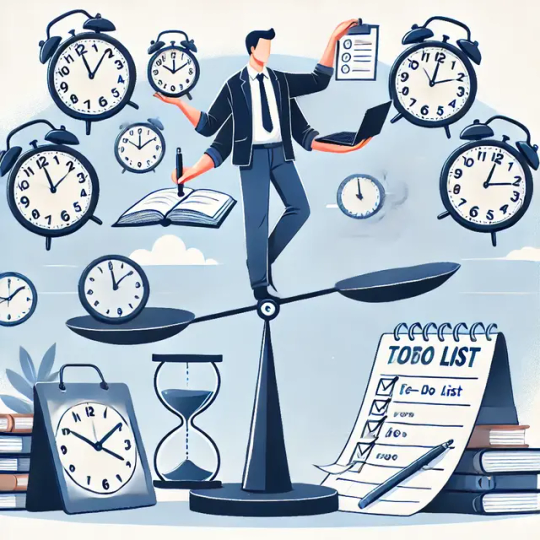
Time Management: Balancing Academics, Extracurriculars, and Personal Life
Time management is an essential skill for anyone, especially us students, helping us to keep up with assignments, exams, and daily tasks without feeling overwhelmed. With all the classes, homework, and extracurricular activities plus our personal life, it can be easy to fall behind or feel stressed. But by learning how to manage my time better, I can improve my focus, reduce stress, and get more done. This blog is about my personal experience with time management that might help you to make the most of your time, stay organized, and succeed in school without burning out. Whether preparing for a big test or just keeping up with our routine, effective time management can help us reach our goals.
Do you also experience burning out with all the things that need to be done, like schoolwork, activities, or home chores? Well, I've been burned out so many times, like every year in high school, mostly in the 3-4 quarter of our school year. In those times I was so stressed, I felt lazy every time; I lost interest in school, and I was just going to school to pass and not to learn. This is because I have poor time management that causes too much stress and anxiety and makes me frequently miss deadlines or submit things at the last minute. Heck, I can't even review whenever our periodical exam is near because of all the pending school activities. Having poor time management can cause all of this that negatively impacts my academic performance.
If you notice these feelings and situations occurring often, it’s not too late to get it right and learn the valuable skill of time management; I recommend using the Eisenhower Matrix, one of the best ways to prioritize tasks. This trick helped me improve my time management skills.
The Eisenhower matrix can help you sort tasks by urgency and importance, allowing you to focus on what truly matters. This method is a simple way to tackle time management and increase productivity. It is divided into 4 quadrants: • The Urgent and Important (Do it Now): It means that the tasks that are due and require immediate attention, such as deadlines or emergencies. You need to handle them first.
• The Important, but Not Urgent (Plan it) It means that these tasks are important but long-due activities and don’t need immediate action. You can plan them for later after you finish the important ones.
• The Urgent but Not Important (Delegate it): These tasks require attention soon but don’t contribute or have much of an impact on your overall grades. If possible, you can pass it to someone.
• The Not Urgent and Not Important (Eliminate it): If it's a distraction, neither urgent nor important, you should disregard it to make more time for other important activities.
And I tell you, when I discovered this and tried it? It was like a thorn was off my throat. Well, to be honest, it was hard to adjust at first because I'm used to always doing activities when their due date is near. But when I got the hang of it, the work went smoothly, and I didn't have to stress over due activities. There is a bit of a downside, though; when there are unexpected events, the list will be ruined. But it rarely happens, and it is easy to make adjustments. Before, I used to cram things, and it affected many things in my life: my grades, my performance in school, my social life, my responsibilities at home, and lastly, my mental health. So I realized that managing time efficiently is the only way to reduce stress and anxiety over all of our workloads. I really recommend the Eisenhower matrix in improving one's time management because it improved mine, and I don't have to cram activities like I used to. That is why time management is very helpful for everyone, not just students but also workers, to make our workload much easier to handle and be more efficient with our time instead of wasting time mindlessly doing unnecessary things that will hinder our productivity and make us feel stressed, especially when the deadline is near.
9 notes
·
View notes
Text
Top 7 Time Management Techniques to Maximize Your Day
Time management is an essential talent that helps people maximize productiveness, reduce pressure, and reap their dreams efficiently. Whether you're a pupil, a expert, or an entrepreneur, powerful time control permits you to make the excellent use of your available time. In this article, we will discover several proven time control strategies that can help you stay organized and efficient.
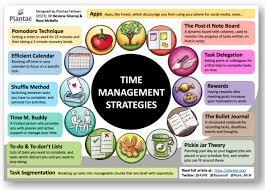
How to improve time management skills at work
1. Prioritization Techniques
One of the only approaches to manage time is through prioritizing responsibilities. Here are a few techniques that help with prioritization:
The Eisenhower Matrix
The Eisenhower Matrix divides responsibilities into four classes primarily based on urgency and significance:
Urgent and Important: Tasks that want instantaneous attention and must be executed first.
Important but Not Urgent: Tasks that contribute to long-term success and need to be scheduled.
Urgent however Not Important: Tasks that can be delegated to others.
Neither Urgent nor Important: Tasks which can be distractions and ought to be minimized.
ABCDE Method
The ABCDE technique entails ranking duties by priority:
A: Most important obligations with intense results if now not finished.
B: Important tasks with moderate outcomes.
C: Tasks that should be done however don't have any real effects.
D: Tasks that can be delegated.
E: Tasks that can be removed.
By making use of those prioritization strategies, you may awareness on obligations that make a contribution on your long-term goals and keep away from time-wasting sports.
2. Goal Setting Techniques
Setting clear and achievable dreams helps direct your cognizance and motivation. Here are a few effective purpose-placing methods:
SMART Goals
SMART dreams are:
Specific: Clearly defined and centered.
Measurable: Have specific standards for monitoring progress.
Achievable: Realistic and manageable.
Relevant: Align with long-term objectives.
Time-sure: Have a deadline.
OKR (Objectives and Key Results)
OKRs involve putting a high-stage objective and defining key effects that degree development. This approach is usually utilized in companies but may be carried out to private goals as well.
By putting clean goals, you could allocate time efficiently and live prompted.
3. Time Blocking and Scheduling
Structuring your day through time management strategies ensures you allocate unique periods for important duties.
Time Blocking
Time blocking off entails dividing your day into fixed blocks for specific obligations. For example:
9:00 AM - 11:00 AM: Deep paintings on a chief task.
Eleven:00 AM - 12:00 PM: Responding to emails.
1:00 PM - three:00 PM: Meetings and collaboration.
The Pomodoro Technique
The Pomodoro Technique includes:
Setting a timer for 25 minutes (one Pomodoro) and operating on a unmarried challenge.
Taking a 5-minute smash after each Pomodoro.
Taking a 15-30 minute spoil after four Pomodoros.
This method improves awareness and stops burnout.
Four. Delegation and Outsourcing
Effective delegation is prime to time control, specifically for specialists and enterprise owners.
Identify obligations that may be delegated.
Assign obligations to competent people.
Provide clean instructions and closing dates.
Follow up and provide comments.
Outsourcing non-center sports (e.G., administrative paintings, graphic layout, or IT support) frees up time for high-effect work.
5. Eliminating Distractions and Procrastination
Distractions and procrastination are big time wasters. Here are a few strategies to fight them:
The 5-Second Rule
Count down from 5 and begin the assignment immediately. This prevents overthinking and hesitation.
The eighty/20 Rule (Pareto Principle)
Focus on the 20% of tasks that produce 80% of results. Eliminate or limit low-fee sports.
Use Technology Wisely
Turn off notifications whilst working.
Use website blockers for distracting sites.
Implement cognizance apps like Forest or Freedom.
6. Reviewing and Reflecting
Regular reviews make certain you live on course along with your desires.
Daily and Weekly Reviews
Review duties finished and pending.
Adjust priorities as needed.
Reflect on what labored well and what needs development.
Journaling
Keeping a productiveness journal allows track development and identify areas for optimization.
7. Self-Care and Work-Life Balance
Managing time successfully additionally includes balancing paintings and private existence.
Set Boundaries
Avoid operating outside targeted hours.
Say no to useless commitments.
Take Breaks
Short breaks enhance consciousness and creativity.
Engage in bodily activity or relaxation techniques.
By implementing these techniques, you could decorate productivity while retaining a healthful paintings-existence stability.
3 notes
·
View notes
Text
Time Management Techniques for Maximum Productivity
Time control is a important talent that can beautify performance, reduce strain, and enhance paintings-existence stability. Whether you are a student, expert, entrepreneur, or homemaker, managing a while successfully allows you to accomplish greater in less time. Here are a few vital time management strategies that will help you boost productiveness.
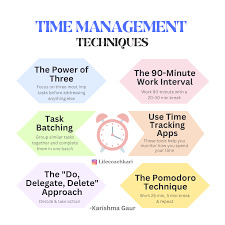
Time Management Techniques For Studying
1. Set Clear Goals
Establishing clean and manageable goals is the foundation of effective time control. Use the SMART (Specific, Measurable, Achievable, Relevant, Time-bound) standards to outline your goals. Having well-described desires enables you awareness on what surely subjects and avoids wasting time on non-important tasks.
2. Prioritize Tasks
Not all obligations are of equal significance. Use prioritization strategies to decide which responsibilities require instantaneous interest and that could wait. Some beneficial prioritization methods consist of:
Eisenhower Matrix: Categorize duties into four quadrants:
Urgent and Important: Do straight away
Important however Not Urgent: Schedule for later
Urgent but Not Important: Delegate if feasible
Neither Urgent nor Important: Eliminate
ABCDE Method: Assign letters to responsibilities based totally on their significance, with 'A' being the best priority and 'E' being the bottom.
3. Plan Your Day in Advance
Creating a daily schedule minimizes wasted time and guarantees you live on track. Consider:
Writing a to-do list the night time before or first issue inside the morning.
Using a planner, calendar, or scheduling app to prepare your day.
Allocating precise time slots for each venture to hold awareness and avoid distractions.
4. Use Time Blocking
Time blockading involves dedicating set periods for unique obligations or activities. By assigning fixed time slots to paintings, meetings, exercise, and breaks, you reduce distractions and hold productiveness.
For instance, in case you work from 9 AM to five PM, your time table would possibly seem like this:
9:00 - 10:30 AM: Deep work (excessive-priority tasks)
10:30 - 10:45 AM: Short destroy
10:forty five - 12:00 PM: Meetings/emails
12:00 - 1:00 PM: Lunch wreck
1:00 - 3:00 PM: Project paintings
3:00 - three:15 PM: Break
three:15 - five:00 PM: Admin tasks and wrap-up
five. Follow the Pomodoro Technique
This approach includes running in quick, focused durations (usually 25 minutes) accompanied by a 5-minute destroy. After 4 cycles, take an extended ruin (15–30 minutes). This technique prevents burnout and maintains you inspired.
6. Eliminate Distractions
Identify commonplace distractions that interrupt your workflow and take proactive steps to minimize them:
Turn off non-crucial notifications.
Use website blockers in case you get without difficulty distracted on-line.
Set up a devoted workspace unfastened from noise and interruptions.
Communicate your awareness hours to colleagues, pals, and family.
7. Learn to Say No
Saying sure to the whole lot can lead to overload and inefficiency. Learn to decline commitments that don’t align with your priorities. Politely declining unimportant requests lets in you to cognizance on tasks that certainly matter.
8. Delegate and Outsource
If a venture doesn’t require your understanding, take into account delegating it to someone else. Effective delegation involves:
Identifying obligations others can cope with.
Assigning obligations to succesful people.
Providing clean instructions and expectancies.
Outsourcing duties including administrative work, customer support, or house cleansing can loose up more time for essential responsibilities.
Nine. Use Technology Wisely
Leverage generation to streamline duties and improve performance. Some beneficial equipment include:
Project control apps (Trello, Asana, Monday.Com)
Time tracking apps (Toggl, RescueTime, Clockify)
Note-taking apps (Evernote, OneNote, Notion)
Automation equipment (Zapier, IFTTT, Grammarly for proofreading)
10. Batch Similar Tasks
Grouping comparable tasks together can reduce intellectual switching expenses and growth efficiency. For instance:
Answer emails in distinctive time blocks rather than in the course of the day.
Schedule meetings on the equal day as opposed to scattering them throughout the week.
Handle related administrative duties in a single consultation.
Eleven. Follow the eighty/20 Rule (Pareto Principle)
The Pareto Principle suggests that 80% of consequences come from 20% of efforts. Identify the tasks that have the most big impact and consciousness on them first. Avoid spending excessive time on low-fee sports.
12. Set Deadlines
Setting cut-off dates creates a feel of urgency and facilitates prevent procrastination. Even if a assignment doesn’t have a strict cut-off date, impose one on your self to stay motivated.
13. Take Breaks and Rest
Working constantly with out breaks can lead to burnout and decreased productiveness. Short breaks help refresh your thoughts and keep attention. Consider:
Taking a 5-10 minute spoil each hour.
Stepping outside for sparkling air.
Practicing deep respiration or stretching physical games.
14. Use the Two-Minute Rule
If a challenge takes less than two minutes to complete, do it straight away. This prevents small obligations from collecting and becoming overwhelming.
15. Reflect and Adjust
Regularly assessment your time management strategies to become aware of what works and what doesn’t. Adjust your techniques based on revel in and evolving priorities.
2 notes
·
View notes
Text
How to Get Your Life Together
1. Set Clear Goals
First things first, you need to know where you’re headed. Take some time to write down your short-term and long-term goals. These could be anything from acing your exams, saving money, to learning a new skill. Having clear objectives gives you direction and motivation.
Tip: Use the SMART criteria to set goals that are Specific, Measurable, Achievable, Relevant, and Time-bound.
2. Create a Daily Routine
A structured routine can make a world of difference. Start by mapping out your day, including study time, work hours, meals, exercise, and relaxation. Consistency is key to building healthy habits.
Morning Routine Example:
Wake up at 7 AM
15 minutes of meditation/journaling/movement
Shower, wear an outfit that makes you happy, put on sunscreen
Have a healthy breakfast (stock up on that protein!)
Create your to-do list for the day
3. Prioritize Your Tasks
Not all tasks are created equal. Learn to prioritize by using tools like the Eisenhower Matrix, which helps you categorize tasks based on their urgency and importance. Focus on what truly matters and tackle those tasks first.
Eisenhower Matrix:
Urgent and Important: Do these tasks immediately.
Important but Not Urgent: Schedule these tasks.
Urgent but Not Important: Delegate these tasks if possible.
Not Urgent and Not Important: Consider eliminating these tasks.
4. Declutter Your Space
A cluttered space can lead to a cluttered mind. Take some time to clean and organize your physical environment. This can be your desk, room, or even digital spaces like your email inbox.
Decluttering Tips:
Tackle one area at a time.
Use the Marie Kondo method: Keep only what sparks joy.
Create designated spaces for your items.
Whenever you lose something: after you've found it, put it back in the first place you searched for it (10/10 life hack right here!)
5. Develop Healthy Habits
Your daily habits shape your future. Focus on building habits that contribute to your well-being and productivity. This includes eating well, getting regular exercise, and ensuring you get enough sleep.
Healthy Habits to Consider:
Drink plenty of water throughout the day.
Incorporate a 30-minute workout into your routine.
Aim for 7-9 hours of sleep each night.
Setting a time limit lock on your phone for apps that don't serve you (looking at you Instagram, and that goes double for TikTok)
6. Learn to Say No
Overcommitting is a common pitfall. Practice saying no to tasks or commitments that don’t align with your goals or that you simply don’t have time for. It’s okay to prioritize yourself and your needs.
Saying No:
Be polite but firm.
Offer an alternative if possible.
Remember, you gotta fill your own cup before you can pour into anyone else's!
7. Reflect and Adjust
Lastly, regularly reflect on your progress. What’s working? What isn’t? Adjust your strategies accordingly. Life is dynamic, and so should be your approach to managing it.
Reflection Tips:
Keep a journal to track your progress and thoughts.
Set aside time weekly to review your goals and routines.
Celebrate your achievements, no matter how small.
Remember: Getting your life together is a continuous journey, not a destination!
17 notes
·
View notes
Text
How to Balance Work and Travel as a Digital Nomad
By Brad Schnickel
The digital nomad lifestyle—a dream for many, blending work and travel seamlessly—has gained immense popularity in recent years. With advancements in technology, countless professionals are embracing the freedom to work from anywhere in the world. However, as glamorous as it sounds, balancing work responsibilities with the joys of travel can be challenging. It requires a mix of discipline, planning, and adaptability. In this guide, we will explore actionable strategies to help digital nomads achieve the perfect balance.

1. Set Clear Goals and Priorities
Balancing work and travel starts with understanding your personal and professional priorities.
Define Your Purpose: Ask yourself why you’re choosing the digital nomad lifestyle. Is it to explore the world, grow your career, or both? Knowing your “why” will help you allocate time effectively.
Set Work Goals: Establish clear, measurable goals for your work. Whether it’s completing a project, meeting deadlines, or achieving specific KPIs, having goals ensures you stay focused.
Travel Priorities: Decide what’s important for your travels. Are you exploring cultural landmarks, indulging in local cuisines, or seeking adventure? Plan your travels around these priorities.
2. Choose the Right Destinations
Where you travel can significantly impact your ability to work efficiently. Consider these factors:
Time Zones: Opt for destinations with time zones compatible with your clients or team. This minimizes scheduling conflicts and makes collaboration easier.
Reliable Internet: A stable and fast internet connection is non-negotiable. Research destinations known for their digital nomad-friendly infrastructure.
Cost of Living: Budget-friendly destinations allow you to stretch your resources further, giving you peace of mind.
Work-Friendly Spaces: Look for locations with coworking spaces, coffee shops, or accommodations designed for remote workers.
Examples of digital nomad hotspots include Bali, Chiang Mai, Lisbon, Medellín, and Tbilisi. These destinations offer excellent internet, affordable living costs, and vibrant communities of like-minded individuals.
3. Establish a Consistent Routine
Traveling to new places can disrupt your schedule, but maintaining a routine is crucial for productivity.
Designate Work Hours: Set specific hours for work and stick to them. Whether you prefer working early in the morning or late at night, consistency is key.
Plan Around Your Energy Levels: Schedule demanding tasks during your most productive hours. Use less productive times for lighter work or exploring.
Incorporate Breaks: Include regular breaks in your routine to prevent burnout and recharge your creativity.
Using tools like Google Calendar or time-blocking apps can help you stay organized.
4. Leverage Technology and Tools
As a digital nomad, the right tools can make or break your productivity. Here are some essentials:
Project Management Tools: Platforms like Trello, Asana, or Monday.com help you manage tasks and collaborate with teams.
Communication Tools: Stay connected with clients and colleagues through Zoom, Slack, or Microsoft Teams.
Cloud Storage: Use services like Google Drive, Dropbox, or OneDrive to access files from anywhere.
Time Management Apps: Apps like Toggl or RescueTime help you track work hours and identify productivity trends.
VPN: Protect your data and access restricted content securely with a reliable VPN.
5. Practice Effective Time Management
Time management is critical when juggling work and travel. Here’s how to optimize it:
Prioritize Tasks: Use frameworks like the Eisenhower Matrix to identify urgent and important tasks.
Batch Similar Tasks: Group similar activities together to minimize context-switching.
Set Deadlines: Establish realistic deadlines to keep yourself accountable.
Minimize Distractions: Use apps like Focus@Will or Freedom to block distractions while working.
When planning travel activities, allocate specific time slots for sightseeing, relaxation, and adventure to avoid overlaps with work commitments.
6. Embrace Flexibility
One of the biggest perks of being a digital nomad is flexibility, but it can also be a double-edged sword. Embrace it wisely:
Adapt to Changes: Weather, internet outages, or unexpected events can disrupt plans. Have a backup plan and stay adaptable.
Flexible Work Locations: Be prepared to work from various settings, whether it’s a coworking space, a coffee shop, or your accommodation.
Balance Workload: Avoid overcommitting to projects. Leave room for spontaneity in your travel schedule.
7. Build a Support Network
Traveling solo can be isolating, but connecting with others can make your journey enriching and enjoyable.
Join Digital Nomad Communities: Platforms like Nomad List, Meetup, or Facebook groups help you find like-minded individuals.
Attend Networking Events: Participate in coworking space meetups, conferences, or local events.
Collaborate with Locals: Engaging with locals enriches your cultural experience and might even open up new opportunities.
Building a network of friends, mentors, and fellow travelers can provide support, inspiration, and a sense of belonging.
8. Take Care of Your Health
Your physical and mental well-being are vital to sustaining a balanced digital nomad lifestyle.
Stay Active: Incorporate exercise into your routine. Explore local yoga classes, hiking trails, or gyms.
Eat Well: Prioritize nutritious meals and try local cuisines in moderation.
Sleep: Ensure you get adequate rest, even if your schedule varies.
Mental Health: Practice mindfulness, meditation, or journaling to maintain emotional balance.
Travel insurance is essential to protect yourself in case of medical emergencies.
9. Manage Finances Wisely
Financial stability is crucial for enjoying the digital nomad lifestyle.
Create a Budget: Track your expenses and set a budget for work and travel activities.
Emergency Fund: Maintain a safety net for unforeseen expenses.
Optimize Income: Diversify your income streams through freelancing, consulting, or passive income sources.
Use the Right Payment Tools: Rely on international banking solutions like TransferWise or Revolut to save on currency conversion fees.
10. Balance Work and Exploration
Achieving harmony between work and travel means finding time to immerse yourself in the culture of your destination.
Plan Ahead: Research must-see attractions, cultural experiences, and local events before arriving.
Set Boundaries: Communicate work hours to clients and colleagues to avoid interruptions during personal time.
Quality Over Quantity: Spend more time in fewer destinations to explore them thoroughly without rushing.
11. Reflect and Adjust
Regularly assess your work-travel balance to ensure it aligns with your goals and well-being.
Review Progress: Reflect on your accomplishments and challenges every few weeks.
Seek Feedback: Ask clients, colleagues, or travel companions for constructive input.
Make Adjustments: Tweak your routine, tools, or destinations as needed to maintain a healthy balance.
Conclusion
Balancing work and travel as a digital nomad is a rewarding yet demanding lifestyle. It requires careful planning, disciplined execution, and a willingness to adapt. By setting clear priorities, leveraging technology, and embracing flexibility, you can create a fulfilling experience that blends productivity with adventure. Remember to take care of your health, finances, and relationships along the way to make the most of this unique journey.
Embark on your digital nomad adventure with confidence and let the world be your office. As Brad Schnickel says, “The key to balancing work and travel is not perfection but finding what works for you.”
2 notes
·
View notes
Text
MASTERING TIME MANAGEMENT:
Strategies for Maximum Productivity.

Effective time management is the key to unlocking maximum productivity. When you prioritize tasks, minimize distractions, and optimize your workflow, you'll be amazed at what you can accomplish.
1. Set Clear Goals
Before you start managing your time, you need to know what you want to achieve. Try the SMART goal framework:
- Specific
- Measurable
- Achievable
- Relevant
- Time-bound
2. Use a Scheduling Tool
Write down all your tasks, appointments, and deadlines in a planner, calendar, or app. This helps you visualize your schedule and make informed decisions.
3. Prioritize Tasks
Use the Eisenhower Matrix to categorize tasks into:
- Urgent & Important
- Important but Not Urgent
- Urgent but Not Important
- Not Urgent or Important
4. Avoid Multitasking
Focus on one task at a time. Multitasking can reduce productivity by up to 40%.
5. Eliminate Distractions
Identify common distractions, such as social media or email notifications, and eliminate them while you work.
6. Take Breaks
Take regular breaks to recharge and avoid burnout. Use the Pomodoro Technique:
- 25 minutes of focused work
- 5 minutes of break
7. Review and Adjust
Regularly review your schedule and task list. Adjust your strategy as needed to stay on track.
By implementing these time management strategies, you'll be able to:
- Increase productivity
- Reduce stress
- Achieve your goals
Remember, time management is a skill that takes practice. Be patient, stay consistent, and you'll see significant improvements in your productivity.
#TimeManagement #ProductivityHacks #GoalSetting #Prioritization #Focus #DistractionFree #Breaks #ReviewAndAdjust #ProductivityTips #Efficiency #Effectiveness #SuccessTips #Motivation
#100 days of productivity#productivity challenge#studyblr#planner#time management#ghostwriter#content writing#writers on tumblr#writerscommunity
2 notes
·
View notes
Text
Week 4 - #100DayReinvention Progress Log
Original challenge by @dreamdolldiary
Hello there girlies! I welcome you to the fourth log of this challenge I have been commiting to fulfill. This week was very crazy for me and actually this log will be very different. Last week I was very low in state. I was sleeping, eating, exercising and managing my time poorly. I had a low mood and only wanted to be asleep. I actually didn't made any progress and I was just in a rut all week.
But a new week has started and November is on the corner, I'm ready to move on from this negative feelings and low levels of energy. I want my ambitiousness and devotion to be stronger, so I will come back to keep track of my healthy habits, begin new ones and invest more on accomplishing my main goals.
What changes will I be doing to keep on track the next two months?
Wrote down my goals and actions / habits on two sheets and hunged them on the wall: This will make it more achievable for me since I will have it in plain sight.
Have a timer on my apps. Only 10 minutes / 5 minutes each one and undefined for academic ones: This is for reduce my screen time and invest in other activities.
Start meal prepping: To have already decided what I'm going to eat and prepare each day and not waste time thinking in the moment.
Reward myself: Unti I accomplish my daily or weekly tasks, I will reward myself with consuming fun content, use social media listen to music, buy me food or any gift.
Connect more to my spiritual side. Yoga, meditation, affirmations, journaling and frquencies: This is to regain a calm mind and high vibrational state to manifest easily, be connected to myself and have a positive mindset.
Romanticize my life + Do fun things: Life is not meant to be that serious and "productivity only", is meant to be enjoyable and beautiful, so I will look out to make my days special and invest in the things I love to delay my burn out.
Use more efficient productivity tips and methods: I will prioritize by the Eisenhower Matrix, have a clean space and change of place when I need to, take breaks, use the 2 minutes rule, stablish deadlines and focus on having the most possible free time. A main factor in this one wil be checking my Notion, where I organzie myself.
I feel comfortable and aligned to having the same goals and stablished daily habits that I decided in the beginning, but I will make adjustments on the methods and the my mindset to achieve them and don't fall off the track.
See you next month and week! 𑄽𑄺ྀ



#clean girl#coquette#dream girl#girljournal#hyper feminine#it girl#motivation#my diary#pink blog#pink aesthetic#just girly thoughts#just girly things#girly tumblr#just girly posts#girly blog#light pink#girly aesthetic#girly girl#pinkcore#pink#blogger#girl blogger#dream life#that girl#wellness#motivateyourself#get motivated#healthyhabits#habits#mindset
70 notes
·
View notes
Text
Mastering Time Management for PhD Scholars
Managing time effectively is crucial for PhD scholars juggling research, writing, teaching, and personal commitments. Here are some simple yet powerful tips to boost productivity:
1. Set Clear Goals: Define daily, weekly, and monthly milestones to stay focused and track your progress.
2. Prioritize Tasks: Use the Eisenhower Matrix to distinguish between urgent and important tasks.
3. Create a Schedule: Plan your day with time blocks for focused work, breaks, and relaxation. Tools like Google Calendar can help.
4. Break Down Big Projects: Divide your thesis or papers into smaller, manageable steps with deadlines.
5. Limit Distractions: Silence notifications and create a dedicated workspace to maintain focus.
6. Say No When Needed: Protect your time by declining commitments that don’t align with your priorities.
7. Take Care of Yourself: Balance work with exercise, hobbies, and time with loved ones to avoid burnout.Consistency and discipline are key. With these strategies, you can maximize productivity and achieve your academic goals!
Follow PhD Pioneers for more tips on thriving in academia!
https://wa.me/919424229851/
2 notes
·
View notes
Note
Any tips on how to create a proper schedule? I struggle a lot with time management.
Mastering Time Management: How to Create a Schedule That Works for You
Time management can be a tricky thing to master, but the good news is that with a little planning and a few smart strategies, you can create a schedule that keeps you on track and reduces your stress levels. If you’ve been struggling to get a handle on your time, don’t worry—you’re definitely not alone. Here’s how to create a proper schedule that works for you.
1. Start by Setting Clear Goals
Before you even think about scheduling, take a moment to define what you’re trying to achieve. Whether it’s finishing an assignment, studying for exams, or balancing school with extracurricular activities, knowing your goals will help you prioritize your time. Break these goals down into smaller, actionable tasks that you can tackle day by day.
2. Understand Your Natural Rhythm
Everyone has different times of day when they’re most productive. Some people are morning people, while others hit their stride later in the day. Pay attention to when you feel most alert and focused, and try to schedule your most challenging tasks during those times. Use less productive times for easier or routine tasks.
3. Use a Planner or Digital Calendar
Having a physical planner or using a digital calendar (like Google Calendar) is essential for keeping track of your time. Start by blocking out your fixed commitments like classes, work, or meetings. Then, fill in study sessions, homework time, and any other tasks. Don’t forget to include breaks and time for relaxation—these are crucial for avoiding burnout.
4. Prioritize Your Tasks
Not all tasks are created equal. Use the Eisenhower Matrix to categorize your tasks into four groups:
Urgent and Important: Do these first.
Important but Not Urgent: Schedule these.
Urgent but Not Important: Delegate if possible.
Not Urgent and Not Important: These can be minimized or eliminated.
By prioritizing your tasks this way, you ensure that you’re focusing on what really matters.
5. Break Tasks into Manageable Chunks
Large tasks can be overwhelming, leading to procrastination. Break them down into smaller, manageable pieces that you can tackle bit by bit. For example, instead of blocking out an entire day to “study biology,” break it down into specific chapters or topics to study in shorter sessions. This makes the task less daunting and helps maintain focus.
6. Set Realistic Time Blocks
When scheduling your tasks, be realistic about how long each one will take. It’s better to overestimate and have extra time left over than to underestimate and feel rushed. Start by tracking how long it actually takes you to complete different tasks, then use this data to plan your schedule more accurately.
7. Use the Pomodoro Technique
If you struggle with staying focused, try the Pomodoro Technique. This method involves working for 25 minutes, then taking a 5-minute break. After four cycles, take a longer break (15-30 minutes). This technique helps maintain focus and prevents burnout, especially during long study sessions.
8. Review and Adjust Your Schedule Regularly
Your schedule isn’t set in stone. Life happens, and things change, so it’s important to review and adjust your schedule regularly. At the end of each day or week, take a few minutes to assess what worked and what didn’t. If you find that certain tasks took longer than expected or that your priorities have shifted, make adjustments accordingly.
9. Build in Flexibility
While it’s important to stick to your schedule as much as possible, it’s also crucial to build in some flexibility. Allow for buffer time between tasks in case something takes longer than planned or if something unexpected comes up. Flexibility prevents you from feeling overwhelmed when things don’t go exactly as planned.
10. Stay Consistent, But Be Kind to Yourself
Consistency is key when it comes to following a schedule, but it’s also important to be kind to yourself. If you have an off day or something doesn’t go as planned, don’t beat yourself up. Simply adjust your schedule and keep moving forward. Remember, the goal is progress, not perfection.
11. Use Apps and Tools to Help
There are plenty of apps and tools designed to help with time management. Apps like Todoist, Trello, or Notion can help you organize your tasks and keep track of deadlines. Experiment with a few and find what works best for you.
12. Balance Work and Rest
Finally, remember that a good schedule isn’t just about getting work done—it’s also about ensuring you have time to rest and recharge. Make sure to schedule in downtime, hobbies, and social activities. A balanced schedule will keep you motivated and prevent burnout.
By implementing these tips, you’ll be well on your way to mastering time management and creating a schedule that supports your goals. It might take some trial and error to find what works best for you, but with persistence and a bit of flexibility, you’ll get there. Good luck, and happy scheduling!
Love,
Sophia
#studygram#motivation to study#study notes#study tips#books and libraries#study motivation#studying#studyblr#quotes#studyspo
27 notes
·
View notes